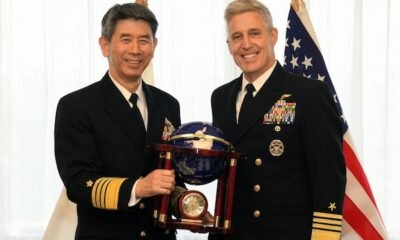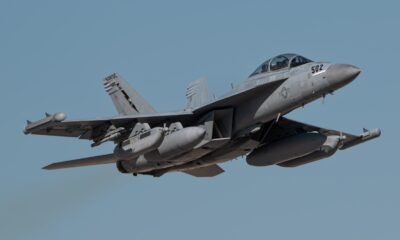All Navy Categories
NPS Atomic Fountain on the Verge of Revolutionizing Quantum Sensing with Phase One Completion
A breakthrough in quantum sensing technology is unfolding at the Naval Postgraduate School (NPS), guided by Dr. Frank Narducci and his doctoral student Commander Jens Berdahl. With the aid of a Defense University Research Instrumentation Program (DURIP) award, they are nearing the completion of an atomic-based instrument designed for precision.
This device promises advancements in quantum sensing, particularly in gyroscopes, gravimeters, accelerometers, and clocks, catering to defense applications. It offers navigation alternatives in GPS-denied environments and the detection of hidden threats, aligning with critical defense needs.
“Professor Narducci’s research exemplifies the vital role of fundamental research in national defense,” asserted Dr. Kevin Smith, NPS Vice Provost for Research and Innovation. The work at NPS enriches understanding of quantum sensing and supports the creation of precision navigation tools crucial for military applications.
Emphasizing technological advancement with a defense strategy, NPS provides its master’s and Ph.D. students a uniquely competitive educational experience that aligns with the Naval Education Strategy for modern warfare.
Quantum science, a key area in defense, receives substantial attention and funding through the DURIP program, overseen by the Office of Naval Research. It ensures that top-notch, relevant research addressing unique naval needs is conducted at universities.
The atomic fountain being developed is akin to an interferometer. It functions by tossing atoms up and down to capture minute gravitational changes, thus uncovering significant data. This precision is achieved via quantum sensors utilizing finely-tuned laser technology.
Narducci explained the necessity of using dual low-power lasers to accurately push atoms without overheating them. Their initial experiments will gauge the swing period of a Foucault Pendulum, observing gravity’s subtle variations through advanced measurement techniques.
To facilitate this, a former elevator shaft in Spanagel Hall is being repurposed to build the atomic fountain, in two phases. Eventually, the apparatus will extend to about 100 feet (30 meters), allowing optimal configuration for experiments.
Commander Berdahl is keen on exploring the operational potential of this technology. His dissertation focuses on demonstrating the atomic fountain’s precision in real-world scenarios, vital for rapid changes in gravitational acceleration analysis.
The facility will feature both on-site and virtual access, allowing seamless interaction with the Naval Research and Development Establishment among other partners. By 2025, it will serve as a vital educational tool for NPS students, aiding the development of future military leaders proficient in quantum mechanics.
Berdahl, enthusiastic about sharing this knowledge, emphasized the importance of understanding quantum technologies for future leaders in various defense roles. “Possessing quantum sensors drastically alters strategic conversations concerning defense technology capabilities,” he added.









